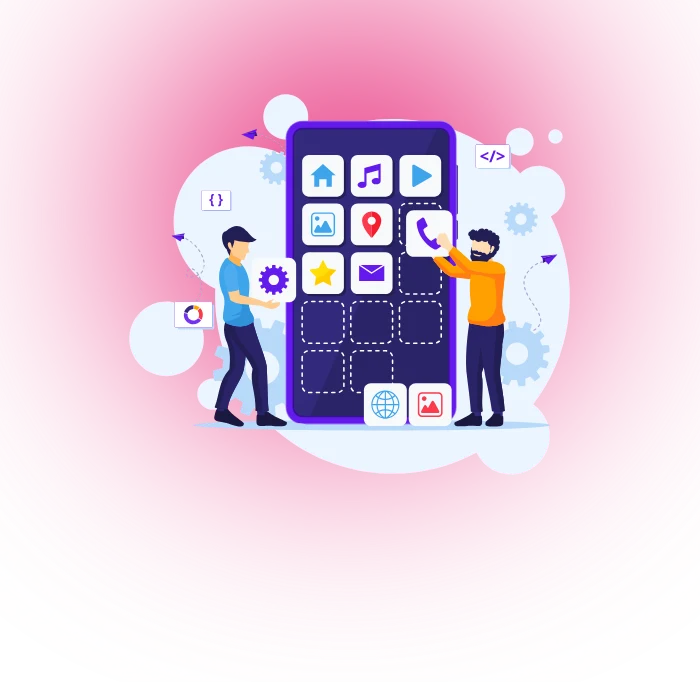Salon appointment apps have become must-have tools for both customers and salon owners. Apps allow customers to conveniently book appointments 24/7, access loyalty programs, get reminders, and more. For salon owners, apps provide useful analytics on customer behavior, boost retention, and enable easier appointment management.
However, developing a custom salon appointment app requires a significant investment. In this guide, we’ll break down the key factors that influence salon app development costs including features, platform, complexity, developers hired, and more. We’ll also explore strategies for controlling costs.
Why Digital Apps Are Essential for Salons Today
Before diving into the costs, it’s worth understanding why salon apps have become virtually essential for running a successful, modern salon business. Apps provide the following advantages:
Easy Appointment Booking
Customers can conveniently book appointments anytime, anywhere right from their smartphone—no need to call the salon or come in person during business hours. Push notifications remind them as the appointment nears.
Insightful Analytics
Salon owners gain data on customer booking habits, popular services, busy times, staff productivity, churn rate, and other metrics to optimize operations.
Loyalty Programs
Apps allow the implementation of loyalty programs where customers earn points, rewards, and discounts for repeat bookings. This incentivizes retention.
Staff Management
The appointment calendar and customer data in the app facilitate better distribution of bookings across the available staff. Owners can also track staff performance.
Marketing and Promotions
Push notifications through the app keep customers engaged with promotions, new service offerings, and loyalty perks. Targeted offers improve customer lifetime value.
Contactless Experience
Customers can book and check in contactless through the app. Any paperwork is digital. This became essential during the pandemic.
For these reasons, salon apps are shifting from “nice-to-have” to “must-have” capabilities in the modern era. But how much should you budget for having a quality app developed?
Factors That Influence Salon App Development Cost
Salon app development costs can range widely from $10,000 to over $100,000 depending on the app’s complexity and features. Here are the key factors that influence overall cost:
Number of Platforms (iOS, Android, Web)
To maximize audience reach, apps need to be built for both major mobile platforms – iOS and Android. This means either building two native apps or a cross-platform app using tools like React Native. Many salon apps also offer a web portal for customers to use on laptops and desktops.
Supporting additional platforms beyond one mobile OS adds engineering and testing time. A single-platform native app may cost $15,000 to $30,000. A multi-platform app often ranges from $30,000 to $60,000+.
Design Customization
More visual customization and branding for your salon’s app increases design time and costs. Using default UI templates is cheaper than extensive customization. However, branding the look and feel consistently helps promote your salon.
Integrations
Connectivity to existing salon management systems, payment processors, review platforms, SMS/email, social media apps, and SMS APIs requires additional development work for smooth integrations. The number of integrations impacts effort.
Admin Dashboard
Developing a robust proprietary dashboard for salon owners to view metrics, manage bookings, send promotions, flag customer issues, and analyze data adds complexity beyond just the customer-facing app experience.
Appointment Features
Supporting appointment scheduling, cancellations, rescheduling, waitlisting, calendar syncing, and reminders takes more development than basic bookings alone. Offering both appointment and membership booking also raises costs.
Payment Processing
If you want customers to pay booking deposits or service balances directly within the app via integration with payment gateways like Stripe, this is more expensive than just booking appointments. PCI compliance also enters the picture.
Loyalty Programs
Gamifying the app with points or tiers, offers, and special status for loyal customers requires non-trivial development work. But it can dramatically boost retention and lifetime value.
Notifications and Reminders
Proactive notifications via push alerts for promotions, upcoming bookings, specials, and confirmations require backend logic. Email and SMS reminders add costs too.
Third-Party API Usage
Some apps utilize maps, calendars, messaging, or other external APIs. Usage costs and integration work add up, especially if APIs span Google, Apple, Facebook, etc.
Security and Performance
Rigorous testing, security hardening, and optimizing app performance take additional development and QA time to prevent crashes. Review monitoring tools like Appsee can also be incorporated.
How Developers Are Billed for App Projects
Salon app development teams typically bill in one of three ways, which impacts total cost:
Fixed Price Project Fee
You pay an agreed-upon flat rate for the entire project including a defined set of features. This provides cost predictability but less flexibility if you later want to modify the scope.
Time and Materials Basis
You pay an hourly or daily rate for the number of hours/days the dev team works on the app. While no cap on total cost, it offers maximum flexibility.
Milestone-Based Billing
The project is divided into phases (requirements, design, dev, testing, etc) with a fixed fee for each milestone. This balances predictability with flexibility.
Teams may blend approaches, charging fixed fees upfront for clearly defined items like wireframes, then hourly billing for actual engineering work. Defining detailed scope and deliverables is key to preventing hourly overages.
How Design Factors Impact Cost
Now that we’ve looked at billing models, let’s examine how certain design decisions and features impact development time and overall project cost.
Visual Design Choices
The level of visual customization and branding affects app complexity. Factors like:
Use of custom gradients, shadows, animations
Original branded illustrations
Complex multi-page layouts
Media-heavy pages
Non-standard navigation approaches
These add development time compared to an app using simplified default UI elements and minimal pages. Branding is important but balancing visual polish with cost considerations is key.
Authentication and User Accounts
Supporting customer account signup and management within the app is more complex than anonymous checkout. Account features like:
Secure password storage
Social login integration
Profile management
Payment info storage for checkout
Account recovery options
All add engineering work beyond guest checkout. Weigh whether these account features are essential for your use case or if anonymous bookings could suffice at lower complexity.
Dynamic Data and Changes
Apps that need real-time sync with changing backend data like appointment availability, customer profiles, inventory, etc require more elaborate networking logic and database architectures.
Personalization Algorithms
If you want to customize promotions, suggestions, and notifications based on individual user behavior, this requires significant machine learning development not needed for generic app interactions.
Aim to constrain complex data syncing and custom algorithms until reaching scale. Focus the v1 on core booking capabilities and add personalization later.
Payment Processing
If you want users to pay directly within the app via Apple/Google Pay or by storing payment info, the integration work with payment gateways like Stripe or Braintree raises costs over simply booking appointments.
Payment systems also have stringent security and compliance needs. Optionally keep payments on your website versus in-app to reduce scope and security considerations.
Platform-Specific Functionality
Adding features that leverage unique native device capabilities also raises costs. For example:
Apple Wallet for storing membership cards requires specialized iOS integration
Apple/Google Maps integration taps into proprietary mapping platforms
Android fingerprint unlock capability requires native SDKs
Apple Push Notifications have a slightly different setup than Android’s
See if you can avoid overly platform-dependent features, especially initially. They fragment the codebase and add testing complexity.
Estimating Total Cost by App Type
Now that we’ve covered the key variables impacting salon app development costs, let’s look at typical cost ranges for different types of salon apps:
Simple Appointment Booking App
A basic salon booking app allowing customers to schedule appointments and pay online can be built for $15,000 to $30,000.
This assumes 1-2 platforms, primarily default UI elements, and core appointment management features.
Multipurpose Salon App
A more robust salon app with extended capabilities like staff management, inventory tracking, analytics reporting, loyalty programs, etc can cost $30,000 to $70,000+.
The wider range accounts for greater feature scope across both customer and business features.
Enterprise Salon Chain App
For larger salon chains with multiple locations and complex operations, a custom-branded app tied into your existing enterprise systems with advanced functionality could run $70,000 to $150,000+.
These higher-budget apps involve extensive visual design needs, complex data integration, security considerations, custom admin portals, and significant testing.
As you can see, costs scale with the complexity, customization, and platform support required. But even at the top of these ranges, investing in a salon app that boosts customer retention and revenue makes sound financial sense.
Strategies for Controlling Salon App Costs
While budget is a factor in app development, don’t compromise too heavily on quality and sustainability. Here are smart ways to balance costs without excessive technical debt:
Carefully Prioritize Must-Have Features
Outline the customer journeys and salon owner needs that are vital for launch. Assign this high priority to the backlog. Defer nice-to-have functionality for future releases to control the initial scope.
Choose the Right Tech Stack
Using frameworks like React Native or Ionic allows cross-platform development rather than native apps for each OS. This reduces cost but assesses performance tradeoffs.
Design for Scalability
Ensure the backend architecture and codebase are constructed in a modular way that facilitates easier enhancements and extensions over time. This avoids major rewrite costs down the road.
Standardize Third-Party Integrations
Leverage common integrated products like Stripe for payments, Twilio for notifications, or Intercom for support rather than custom-built equivalents. Integrations can get expensive.
Involve UX Experts Upfront
Conducting user research and usability testing early in the dev process means catching issues earlier before they become expensive change requests late in the app’s UX design.
Set Internal Feature Request Limits
Keep feature creep minimal. Institute a process where stakeholders can only put forward say 5-10 enhancement requests per release to avoid uncontrolled scope expansion.
Phase by Priorities
If the budget is limited, develop by priority in phases: booking in v1, payments in v2, and promotions in v3. Deliver core capabilities first before secondary features.
How Much Ongoing Costs Are There?
Once a salon app is built, released, and being used actively, there are ongoing costs to account for:
App Store yearly fees – $99 for Apple, $25 for Google Play
Servers/infrastructure – $50+ monthly depending on traffic
Ongoing developer costs – $5000+ monthly if the technical team retained
Future enhancements – $1500+ per new feature
Bug fixes and maintenance – $3000+ monthly
Technical debt paydown – Occasional higher costs
Plan for app development to be an ongoing investment, not just a one-time cost. Bugs and user feedback will drive requests for incremental improvements over time. Factor these post-launch costs into your mobile strategy.
While investing in a salon app costs serious capital, the long-term benefits for customer experience and business efficiency make the investment worthwhile for most modern salons. Just focus on delivering the must-have user journeys first before considering advanced features.
FAQs on Salon App Development
What is a Salon App?
Salon app is a mobile solution that helps customers to easily book and manage salon appointments from their smartphones.
What is an On-Demand Beauty Application?
On-Demand Beauty Application is a mobile app that connects users with professional beauty service providers such as hairstylists, makeup artists, and spa therapists, allowing customers to book personalized beauty and wellness services anytime and anywhere.
What are the benefits of developing salon app for my business?
Salon app boosts your business by simplifying bookings and payments, saving valuable time for both you and your clients. It increases customer loyalty with personalized offers and automated reminders that reduce no-shows.
How long does it take to develop an app for a beauty salon?
Developing a beauty salon app typically takes around 3 to 5 months, depending on the app’s complexity and features. This timeline includes planning, design, development, testing, and deployment phases.
Working with experienced app development company and using agile methods can help speed up the process while ensuring a high-quality app launch
What AI features can be included in my salon app?
AI features for a salon app can transform both customer experience and business operations. Key AI features to include are:
Smart Booking & Scheduling: AI predicts peak hours, optimizes appointment slots, and minimizes no-shows with automated reminders.
Personalized Recommendations: Machine learning analyzes client preferences to suggest tailored hairstyles, treatments, and products.
Virtual Try-Ons: Using computer vision and AR, customers can preview hairstyles, makeup, or colors in real time before booking.
AI-Powered Chatbots: Provide 24/7 instant customer support, answer FAQs, and facilitate bookings with human-like conversation.
Dynamic Pricing & Predictive Analytics: Adjust pricing based on demand and forecast trends to optimize revenue and resource allocation.
What is the Cost of Developing a Salon App?
Basic apps with essential booking features cost around $5,000 to $10,000, while advanced apps with payment integration, loyalty programs, and custom features can exceed $20000.
How to Reduce the Cost to Develop a Beauty Salon App?
To reduce the cost of developing a beauty salon app, start by focusing on essential features like booking and customer profiles before adding advanced functions. Use open-source tools to save on development time and costs.
What are the top features included in salon app?
Top salon app features to include are:
online appointment booking with real-time availability, automated reminders, and easy rescheduling.
Client management with profiles, service history, and personalized recommendations enhances user experience.
Additional essentials are integrated payment processing, staff management, loyalty programs, and analytics dashboards to boost efficiency and customer retention.
Advanced features may include AI-driven personalization, virtual try-ons, and chatbots.
How to choose the right app development partner for my salon app?
To choose the right app development partner for your salon app, prioritize companies with proven expertise in salon and beauty app development. Review their portfolio and client testimonials to ensure they understand salon industry needs.
What types of salons benefit most from AI app development?
Salons that benefit most from AI app development include hair and beauty salons, spa centers, wellness clinics, and chain salons.
How to Hire Best Salon App Developer?
To hire the best salon app developer, look for demonstrated experience in beauty and salon app projects. Prioritize developers who understand your business goals and target audience. Check their technical skills in mobile platforms (iOS and Android), UI/UX design, and backend integration.






